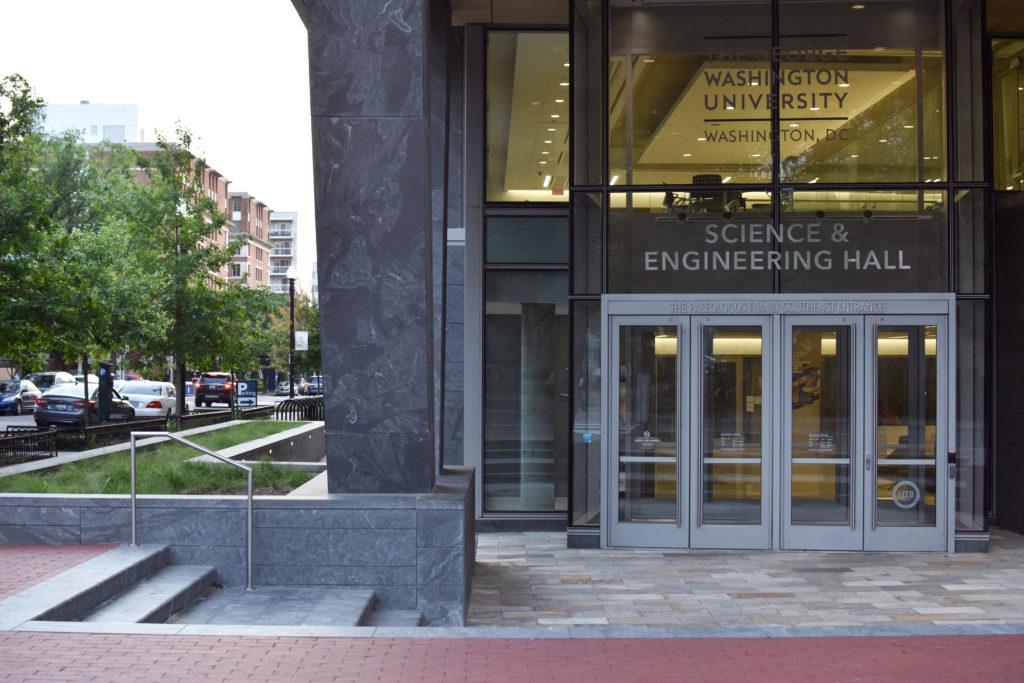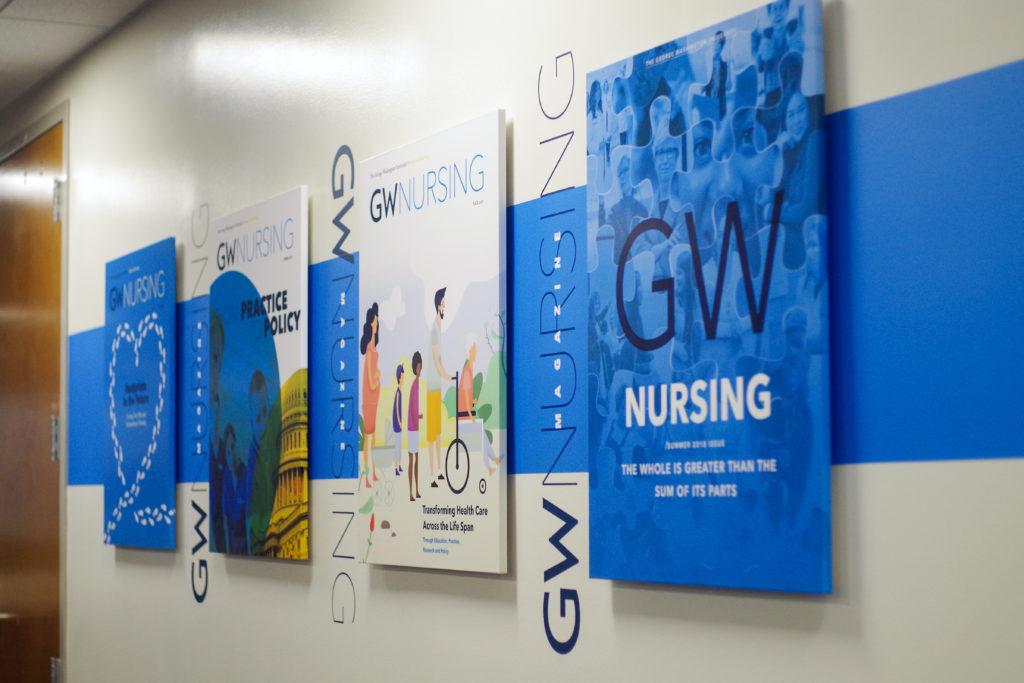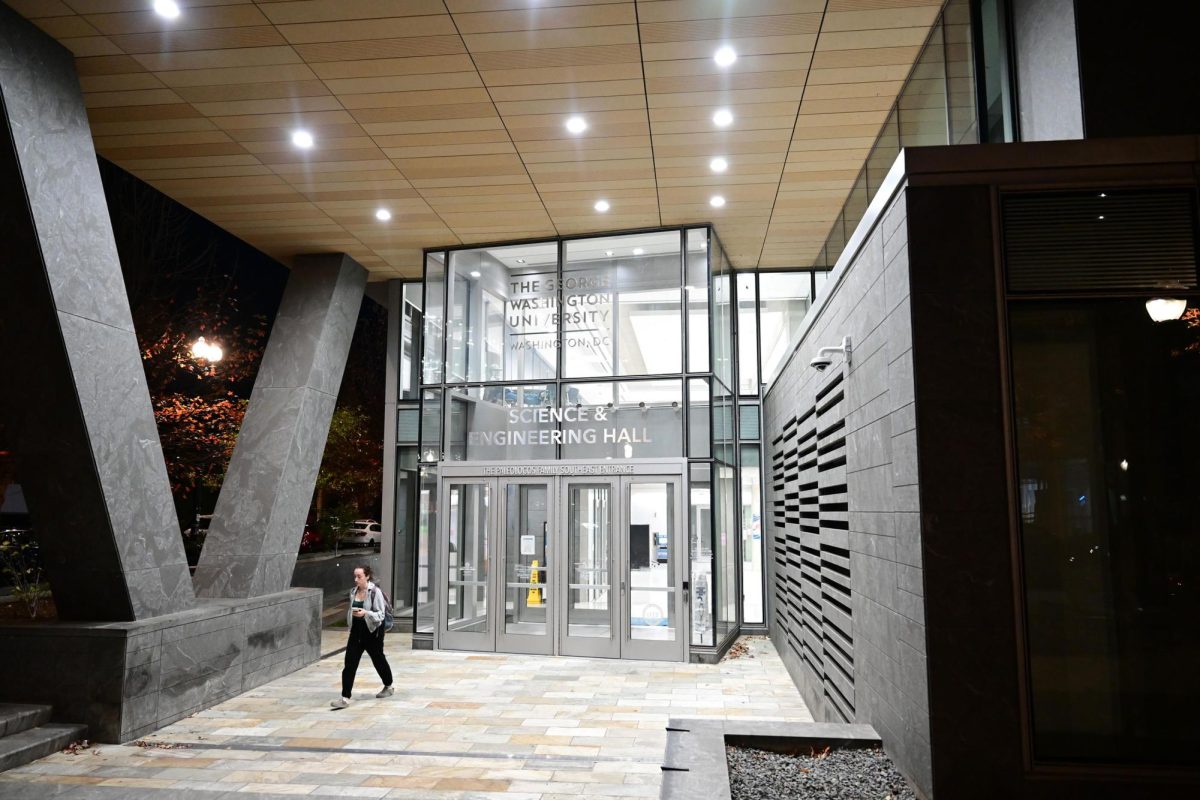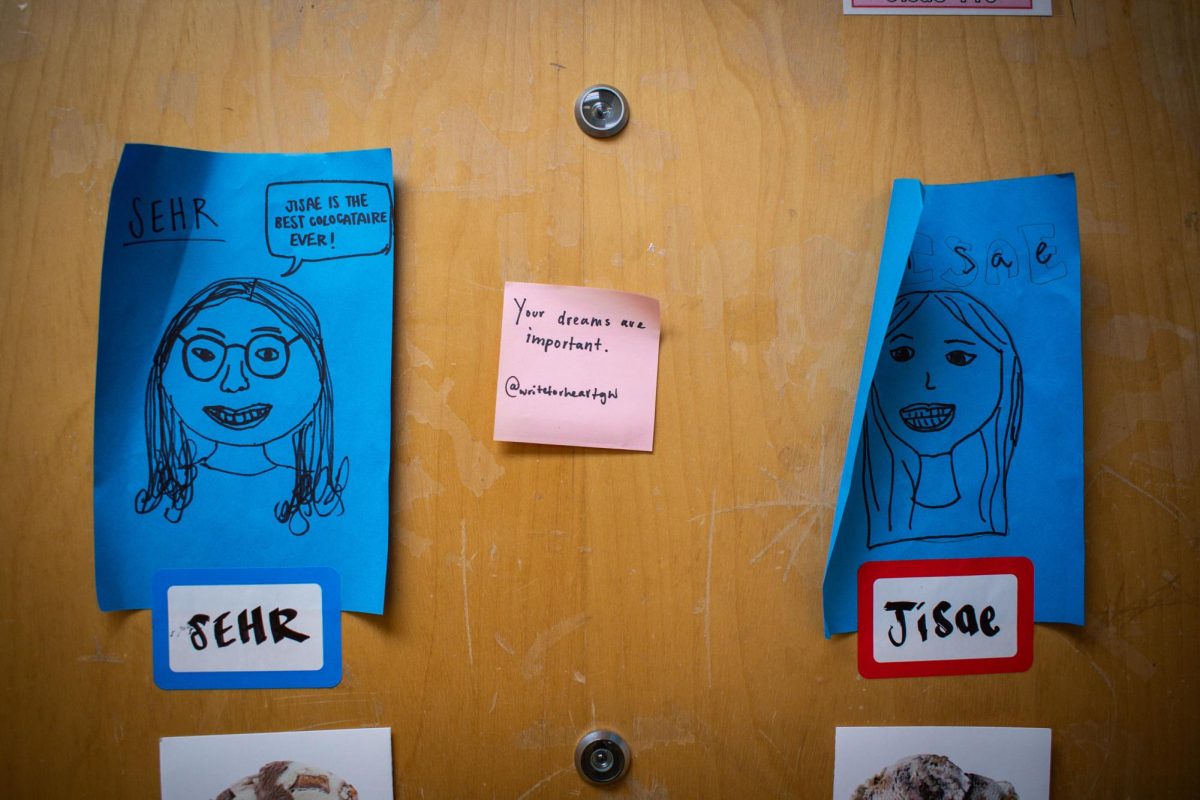An engineering student organization designed a water management project to expand water access in a small village in northern India by June.
Local contractors in the village of Bhutiya, India will install a percolation pond – which captures and stores runoff rainwater – that GW Engineers Without Borders designed to refill groundwater and village irrigation wells during the mid-June to mid-September monsoon season for residents during droughts. Senior Maura Kane-Seitz, a co-lead of the project alongside freshman Isabella Perusse, said the pond will improve inadequate water management systems during dry seasons lasting from December through March and mitigate the effect of climate change on droughts in Bhutiya, where residents rely on agriculture for their income.
Kane-Seitz, who is studying civil and environmental engineering, said the percolation pond will increase water access to 15 wells in Bhutiya. She said about 400 people live in Bhutiya, and many residents’ livelihoods revolves around agriculture, which requires a significant amount of water for cultivation.
“The goal is for it to be a long process that’s restarted naturally every year with monsoon season again,” Kane-Seitz said. “It’s increasing the amount of water that’s available in this area by capturing it as opposed to it continuing to run off in different directions.”
Kane-Seitz said the project began six years ago, but COVID surges in the Uttar Pradesh region of northern India paused the project because Bhutiya community members stopped communicating with EWB-GW at the time.
She said the team completed the designs for the percolation pond in February 2023 and is currently waiting for EWB-USA, the national group representing EWB-GW, to approve the designs so the team can partner with local contractors to build the pond, aiming to wrap up construction by June.
Kane-Seitz said the village’s region contains rivers that run only during the monsoon season and dry up completely during the dry season, which helped EWB select a pond where the rivers flow to maximize the amount of accrued runoff. She said EWB members worked with GW engineering professors to create the pond design and shared them with Jagran Jan Vikas Samiti, a nongovernmental organization for rural and tribal populations EWB is collaborating with to bridge language barriers and conduct outreach to local contractors in Bhutiya.
She said donations will cover the total project cost of about $12,000, which accounts for the excavation of the percolation ponds, construction workers’ compensation and direct oversight of the project.
Kane-Seitz said GW EWB members traveled to Bhutiya in 2019 and 2020 to meet with the head community leader of the Bhutiya community, form a Community Water Board and choose the location for the percolation pond. She said the board is made up of 10 Bhutiya community members, who will be in charge of maintaining the percolation pond and communicating with JJVS if there are any issues with its performance, like low pond water levels, to ensure its success.
“It’s us encouraging the community that having a set group of people who are constantly aware of analyzing the impact will help with the project,” Kane-Seitz said.
Kane-Seitz said the village’s lack of dam and trench infrastructure and old, worn-down wells result in inadequate community water management systems.
She said water insecurity is a global problem, and in Bhutiya, community members have little access to water. India is among the most “water-stressed” countries, hosting 18 percent of the world’s population but holding only 4 percent of the world’s water resources, according to a 2023 report by the World Bank.
Kane-Seitz said a member of the Bhutiya village told her three years ago that they don’t have enough water to make tea – a regional social custom to drink when welcoming guests and during every meal.
“When we did our initial assessment and asked the community members what they need, almost every single one of them said that we need water,” Kane-Seitz said. “So it showed that it is something that they think about every single day and causes a lot of issues within the community because of how little access they have.”
Experts in environmental engineering and water accessibility said failing infrastructure like wells with low-quality construction materials can contribute to water scarcity. They said community members in Bhutiya must welcome the project’s responsibilities, like keeping up the pond, for it to succeed.
Ken Thomas, a professor of environmental science and public policy and an assistant dean of Harvard College at Harvard University, said EWB’s efforts to include a Community Water Board in the decision-making process makes the project more likely to succeed in the long term. He said the board increases local engagement and support from the community regarding the analysis of water levels and the pond’s impact.
He said the board should ensure all community members are held accountable for their water usage and the body runs in a democratic way, electing board members to make every community member’s voice heard.
“We often have ideas of what technology is best, based on a lot of the textbooks that we study from,” Thomas said. “But it’s really about what works in that place and in that context.”
Richard Luthy, a professor of civil and environmental engineering at Stanford University, said percolation ponds have a low cost, which benefits the project’s leaders when seeking funding from donors. He said engineers must consider the subsurface geology or the physical properties of the soil so there are no natural contaminants, like bacteria or viruses, entering the water supply.
“If this is a tenant for water supply, you want to make sure that you’re putting appropriate water in and you’re not pulling out natural contaminants from the subsurface media,” Luthy said.
Ronald Mersky, a professor and chair of civil engineering at Widener University, said access to clean water for drinking, industrial or agricultural purposes is “fundamental” for survival in agricultural areas. He said increases in population and climate change limit the water supply in villages like Bhutiya, damaging health, livelihood, agriculture and manufacturing.
He said a percolation pond could be helpful for securing a water supply, but the local community’s water deficit – the difference in the time it takes for the town to use water and the pond to naturally refill – could still limit water availability.
“If there was not enough water and high enough quality water, then individuals cannot live in that area, let alone have a livelihood,” Mersky said.











